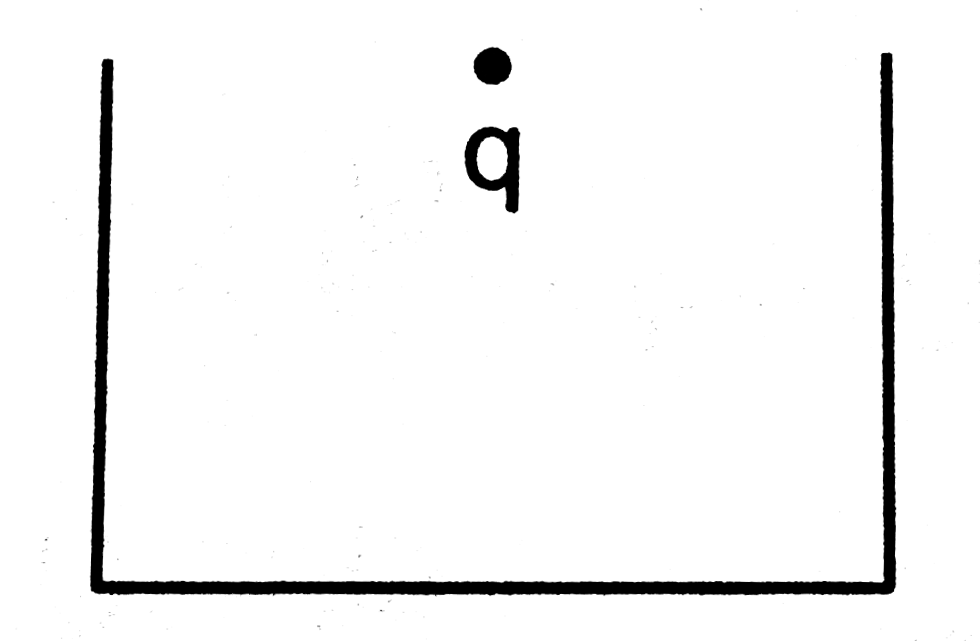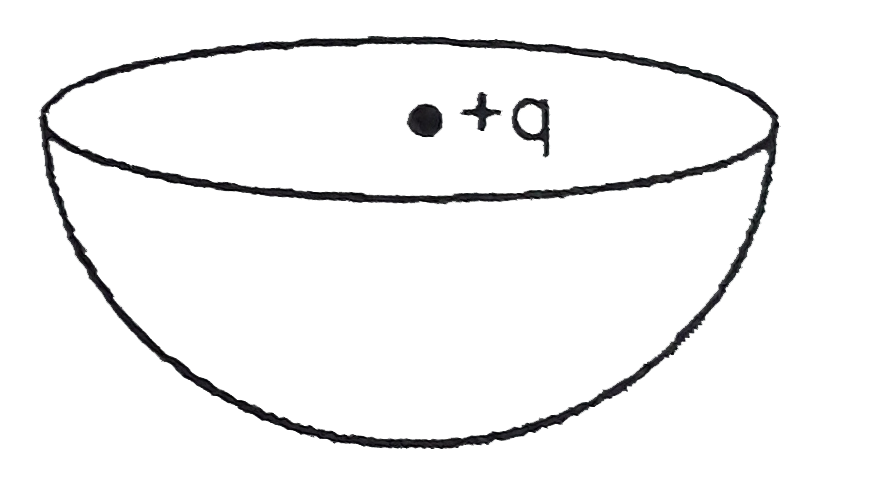In figure (a), a charge q is placed just outside the centre of a closed hemisphere. In figure (b), the same charge q is placed just inside the centre of the closed hemisphere and in figure (c), the charge is placed at the centre of hemisphere open from the base. Find the electric flux passing through the hemisphere in all the three cases.

0 , qε0 q2ε0
0 , 0 q2ε0
0 , qε0 0
0 , 0 0
The correct Answer is:A
a. Given surface is a closed surface. Therefore we can directly apply the result.
ϕ=qinε0=0 as qin=0
b. Again given surface is a closed surface.
Hence, we can directly apply the result.
ϕ=qinε0=qε0 as qin=q
c. Given surface is not closed surface. Hence, we cannot apply the directly result of Gauss's theorem. If we draw a complete sphere, then
ϕ through complete sphere =qε0
∴ϕ through hemisphere =12(qε0)
Topper's Solved these Questions
- ELECTROSTATICSBook:DC PANDEYChapter:ELECTROSTATICSExercise:Level 1 Objective
Explore 82 Videos
- ELECTROSTATICSBook:DC PANDEYChapter:ELECTROSTATICSExercise:Level 1 Subjective
Explore 15 Videos
- ELECTROSTATICSBook:DC PANDEYChapter:ELECTROSTATICSExercise:Exercise 24.7
Explore 2 Videos
- ELECTROSTATIC POTENTIAL AND CAPACITORSBook:DC PANDEYChapter:ELECTROSTATIC POTENTIAL AND CAPACITORSExercise:(C) Chapter exercises
Explore 50 Videos
- GRAVITATIONBook:DC PANDEYChapter:GRAVITATIONExercise:All Questions
Explore 120 Videos
Similar Questions
Knowledge Check
A charge 10μC is placed at the centre of a hemisphere of radius R=10cm as shown. The electric flux through the hemisphere (in MKS units)is
 A20×105B10×105C(6×105D2×105
A20×105B10×105C(6×105D2×105A charge q is placed at the centre of the open end of a cylindrical vessel . The flux of the electric field through the surface of the vessel is
 AzeroBqε0Cq2ε0D2q2ε0.
AzeroBqε0Cq2ε0D2q2ε0.Charge of 2 C is placed at the centre of a cube. What is the electric flux passing through one face ?
A1(3ε0)B(14)ε0C2ε0D3ε0
A charge q is placed at the centre of a hollow sphere of radius r, Total electric flux passing through the spherical surface is __________
View SolutionA charge q is placed at the centre of a cube of side l what is the electric flux passing through two opposite faces of the cube ?
View SolutionA charge q is placed at the centre of a cylinder of radius R and length 2R. Then electric flux through the curved surface of the cylinder is
View SolutionA point charge +q is placed at the centre of curvature of a hemisphere. Find flux through the hemispherical surface.

View Solutiona point charge q is placed at the centre of a cylinder of length L and radius R the electric flux through the curved surface of the cylinder is
View Solution